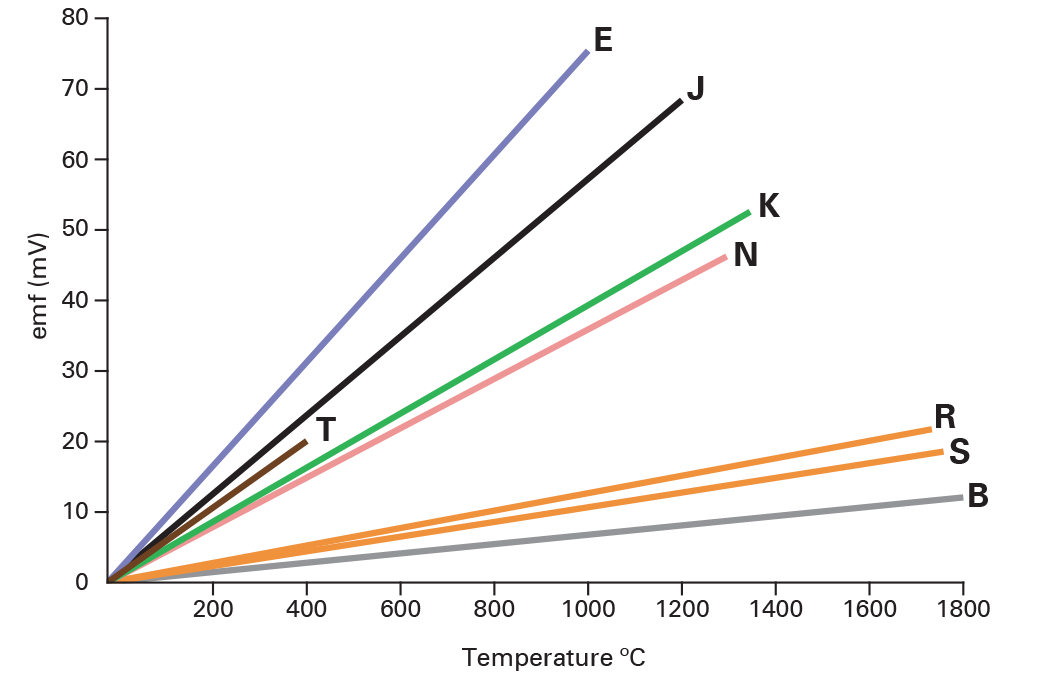Temperature Transmitters and Converters
Thermocouples typically generate very small signals - ranging from around 10 to 80 microvolts per °C - while 100-ohm RTDs produce approximately 0.5 millivolts per °C with a 1mA excitation current. Depending on the sensor and temperature, output voltages might range from a few hundred microvolts up to 75 millivolts for thermocouples, or 250 to 750 millivolts for RTDs. These low-level signals are highly vulnerable to electrical interference and signal degradation, especially when transmitted over long distances using standard cabling.
As shown in Figure 7.1, thermocouple EMF output increases with temperature, but remains in the millivolt range - posing challenges for remote measurement:

Figures 7.1: EMF versus temperature relationship for different thermocouple types. Output voltages remain in the millivolt range even at high temperatures.
This is where two-wire temperature transmitters come into play. Their main job is to convert and amplify the low-voltage sensor signal into a standard 4–20mA current signal. Current signals are far more robust than voltage signals when it comes to noise immunity and transmission over long cable runs - particularly in electrically noisy industrial environments.
The 4–20mA signal format offers several advantages:
- It's largely immune to electrical noise.
- It's unaffected by voltage drop due to cable resistance.
- It allows the use of inexpensive, standard twisted-pair copper cables instead of specialised compensating, extension or shielded cables.
In thermocouple applications, cold junction compensation is often built into the transmitter - either inside the head (for head-mounted types) or in the rack (for rack-mounted systems). While basic analogue transmitters may not provide signal linearisation, modern digital transmitters often do, improving measurement accuracy across a broader range.
Transmitters operate by drawing power from a remote DC supply (usually 12–30V) and use the current drawn to represent the temperature. At the lowest end of its calibrated range, the transmitter draws 4mA, increasing linearly up to 20mA at the top of the range. Internal circuitry - whether adjustable, programmable, or factory-set - determines what temperature span the 4–20mA signal represents.
Because they draw both power and signal from the same two wires, these transmitters eliminate the need for separate power supplies at remote locations - another reason why 24V DC systems are a mainstay in industrial automation.
Summary
Transmitters convert low-level voltage signals from thermocouples and RTDs into standard 4–20mA current signals, enabling accurate and interference-resistant remote temperature measurement. They often include cold junction compensation and, in digital models, signal linearisation. Drawing power and sending signals over just two wires, they simplify installation and thrive in industrial environments.

 France
France Germany
Germany Spain
Spain Netherlands
Netherlands Italy
Italy Hungary
Hungary United States
United States Australia
Australia